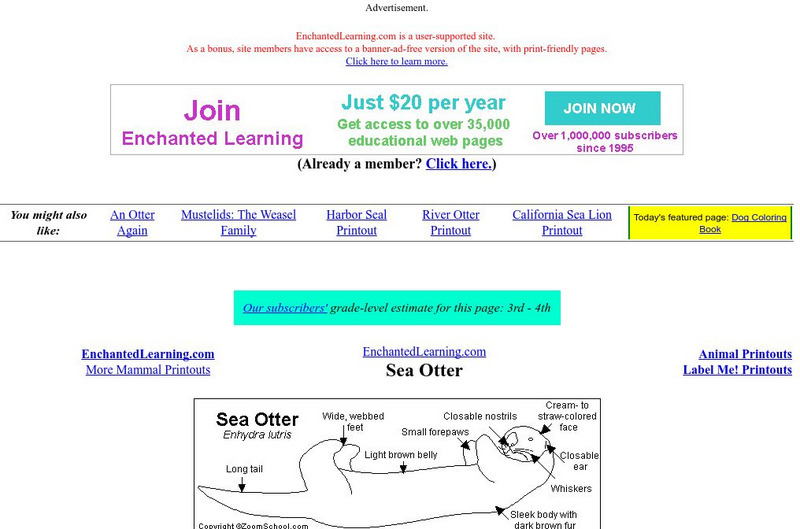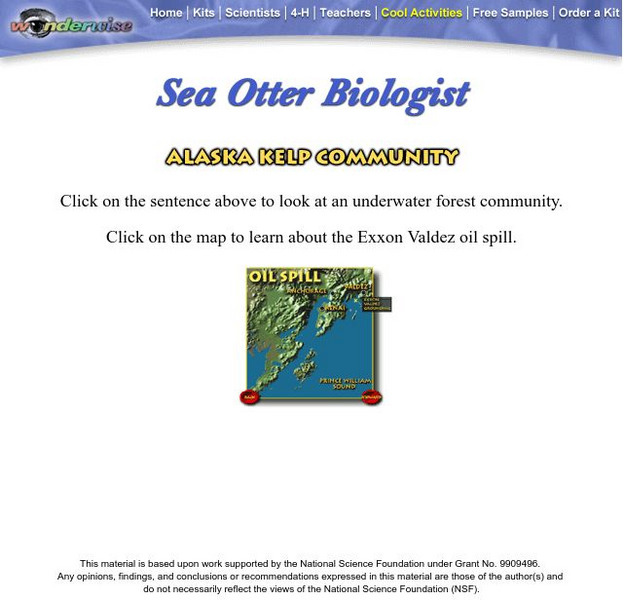Hi, what do you want to do?
Scholastic
Scholastic Explorers: Ocean Life
This lesson plan explores how human activity has an impact on turtles, sea otters, and dolphins in different parts of the world. Your young scholars will read field reports from the sites and evaluate data that is offered.
Oregon Zoo
Oregon Zoo: Southern Sea Otter
Get to know the facts, behavior, breeding habits, and conservation of the southern sea otter who lives in the marine ecosystem.
Canadian Museum of Nature
Canadian Museum of Nature: Sea Otter
Get to know the Sea Otter.. colored photos, description, life cycle, map of habitat, food. Only the basic details of this animal are given, making this site perfect for younger researchers.
Enchanted Learning
Enchanted Learning: Sea Otter
Here you can find a great printout of a sea otter as well as detailed information about the animal. Learn what a sea otter looks like, what kind of fur they have, what they eat, and who their predators are.
PBS
Pbs Nature: Otters
Discover more about how otters live, what they eat and how they socialize when you visit this informative resource. This condensed site will benefit students who need help narrowing their research information.
Smithsonian Institution
National Museum of Natural History: American Mammals: Sea Otter
The Sea Otter is the largest member of family Mustelidae, and the smallest marine mammal. Sea Otters are more aquatic even than seals and sea lions, because they mate and give birth in the water. Learn more about the Enhydra lutris, more...
University of Nebraska
University of Nebraska State Museum: Alaska Kelp Community
Discover the ecological relationships of six different organisms living in the Alaskan kelp community. The site also contains an interactive map showing the time line for the spread of the Exxon Valdez oil spill.











